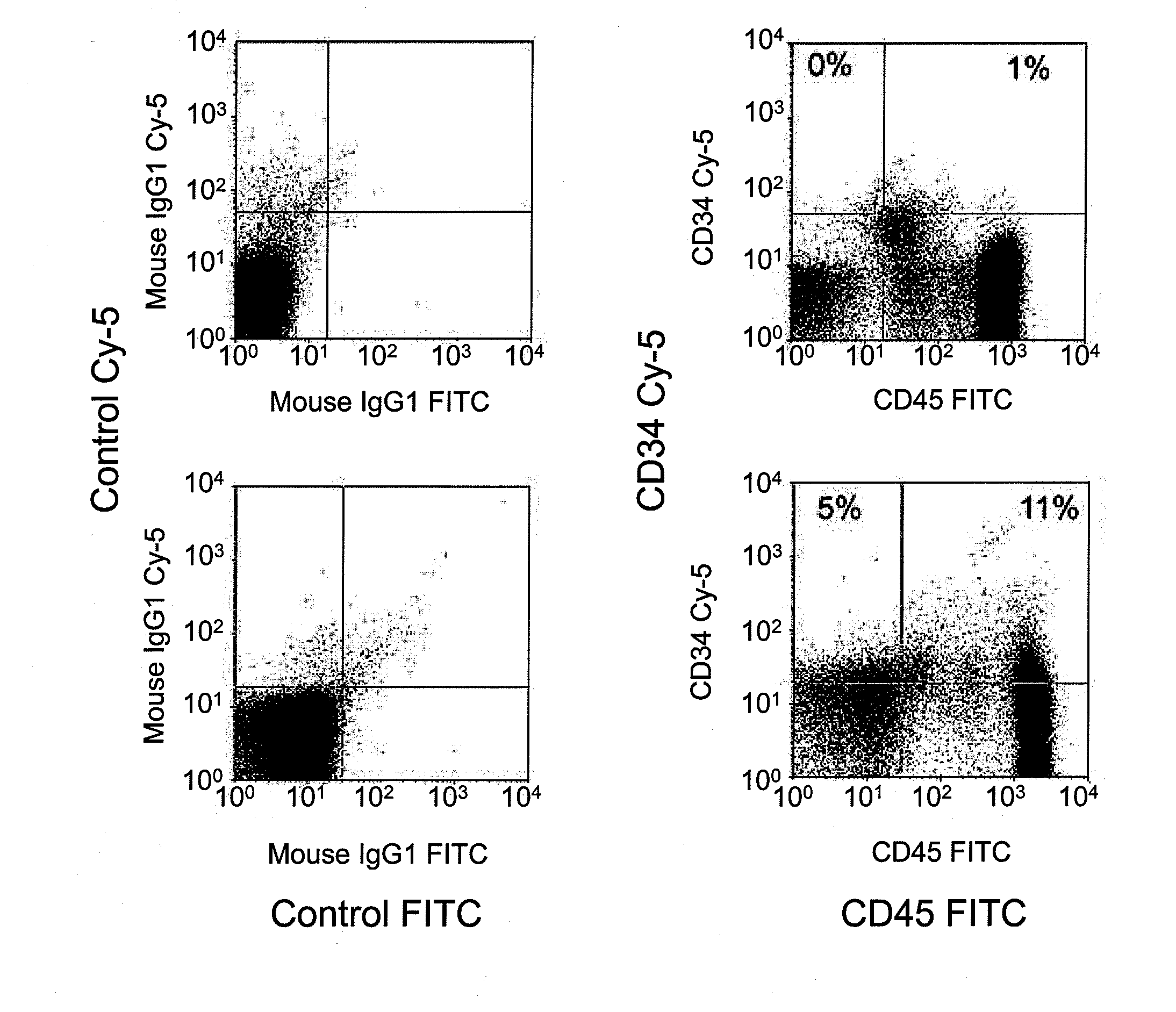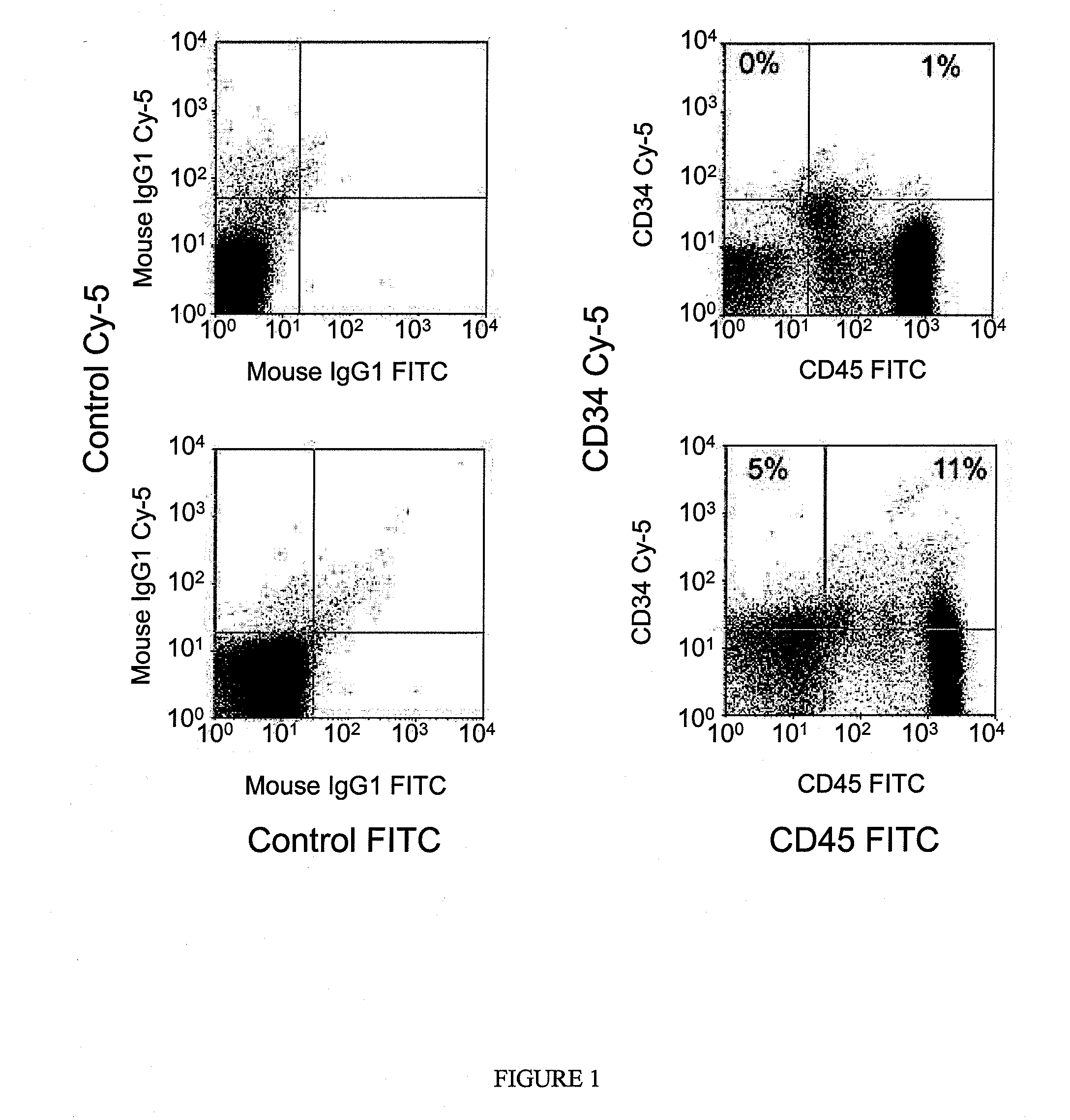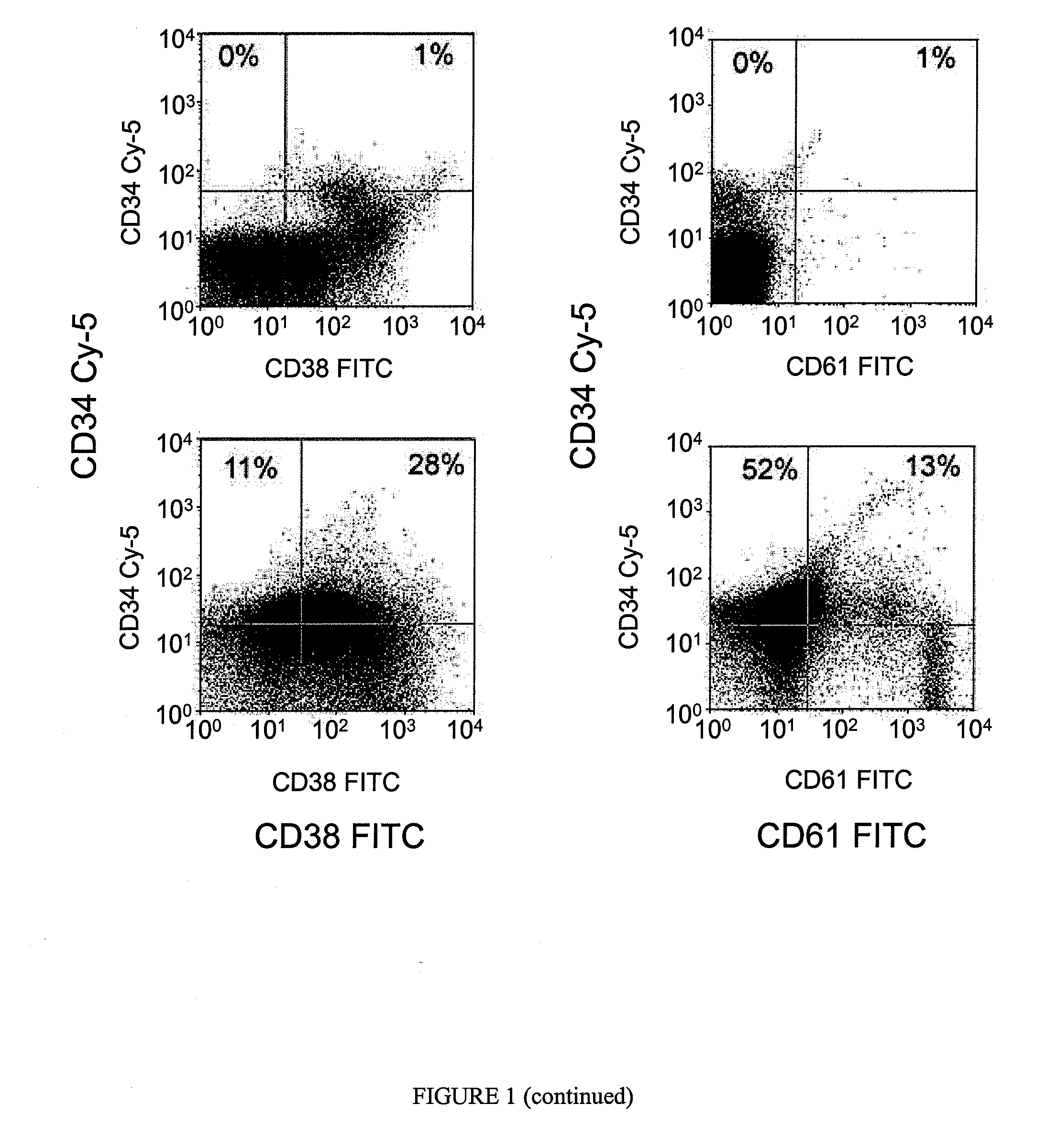Treatment using reprogrammed mature adult cells
a technology of mature adult cells and stem cells, applied in the direction of biocide, drug composition, skeletal/connective tissue cells, etc., can solve the problems of cumbersome extraction from these sources, uncertain success rate of stem cell treatment, and inability to meet the needs of patients,
- Summary
- Abstract
- Description
- Claims
- Application Information
AI Technical Summary
Benefits of technology
Problems solved by technology
Method used
Image
Examples
example 1
Materials and Methods
[0161]This clinical study assessed the safety of infusing a single dose of autologous 3 hr reprogrammed cells following exposure to haematopoietic inductive culture condition into four patients with aplastic anemia.
[0162]This clinical study was approved by the ethical committee of the King Edward Memorial (KEM) Hospital and was performed in joint collaboration with the Institute of Immunohematology (IU). Patients were required to fulfill the criteria outlined in Table 3. As a result, four patients with severe (3 males) and hypo-plastic (1 female) anaemia were enrolled into the study. These 4 patients were selected and monitored by IIH / KEM staff.
[0163]The patients' clinical and treatment history are described in Table 4, while their CD34+ cells infusion dosage are shown in Table 5.
TABLE 3Inclusion CriteriaEach1 - Absolute Neutrophil count 9 / Lcriterion2 - Platelet count 9 / Lis3 - Anemia with corrected Reticulocyte RequiredOnly One4 - Bone marrow cellularity of the5...
example 2
Materials and Methods
[0190]Autologous reprogrammed haematopoietic cells (target cells) were tested in 21 patients with beta thalassemia. Nineteen patients had beta-thalassemia major and 2 had thalassemia intermedia. One of the beta thalassemia intermedia patient was thalassemia / Hb E variant (common in patient of far eastern and Indian origin) and the other had Thalassemia / Sickle cell anaemia.
[0191]Patients were apheresed by processing 2-3 times their total blood volume. The autologous reprogrammed cells were generated through reprogramming white blood cells until the target cells were obtained, as indicated by their distinguishing characteristics as described above. The patients were administered the autologous reprogrammed cells via intravenous infusion into the jugular or veins in the arm or thigh.
Results
[0192]There was no toxic or adverse side effects were observed following infusion of the reprogrammed cells in patients with beta thalassemia as measured by vital sign monitoring,...
example 3
Materials and Methods
[0195]Two patients with diabetes were apheresed by processing 2-3 times their total blood volume. Autologous reprogrammed mesenchymal stem cells, pluripotent stem cells, and islet cells (target cells) were obtained through reprogramming apheresed white blood cells until the target cells developed, as indicated by their distinguishing characteristics as described above. The patients were administered the autologous reprogrammed cells via intravenous infusion into the jugular or veins in the arm or thigh.
Results
[0196]Following infusion of the autologous reprogrammed cells, the patients were synthesizing normal level of insulin, as measured by fasting and 90 minutes food intake stimulated c-peptide. This normal level of c-peptide is being maintained up to 3 months following infusion of the reprogrammed cells (FIG. 9). In addition, Hb A1C levels, which indicate glycemic control, had normalized following infusion of the reprogrammed cells (FIG. 10). For example patie...
PUM
| Property | Measurement | Unit |
|---|---|---|
| temperature | aaaaa | aaaaa |
| temperature | aaaaa | aaaaa |
| temperature | aaaaa | aaaaa |
Abstract
Description
Claims
Application Information
 Login to View More
Login to View More - R&D
- Intellectual Property
- Life Sciences
- Materials
- Tech Scout
- Unparalleled Data Quality
- Higher Quality Content
- 60% Fewer Hallucinations
Browse by: Latest US Patents, China's latest patents, Technical Efficacy Thesaurus, Application Domain, Technology Topic, Popular Technical Reports.
© 2025 PatSnap. All rights reserved.Legal|Privacy policy|Modern Slavery Act Transparency Statement|Sitemap|About US| Contact US: help@patsnap.com



